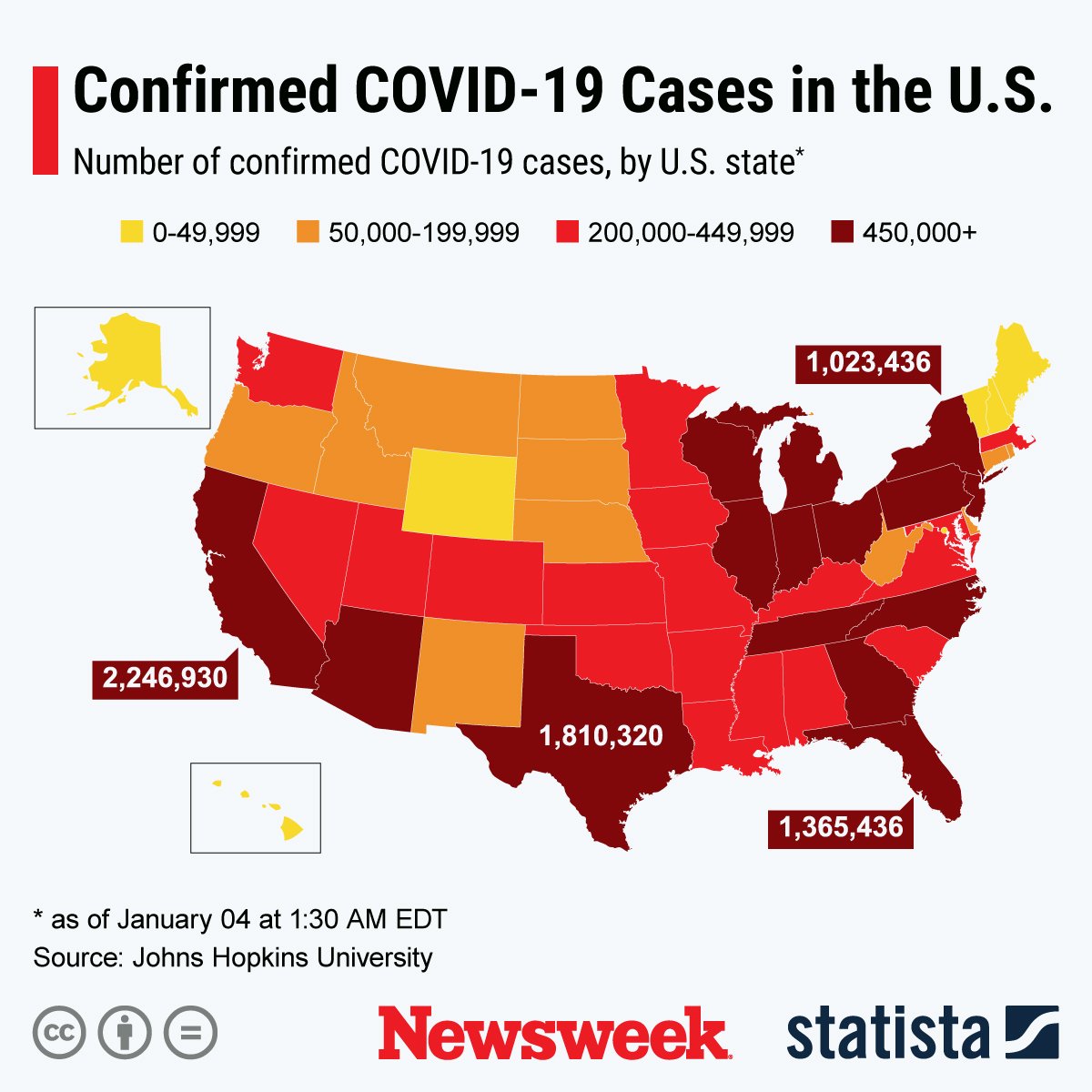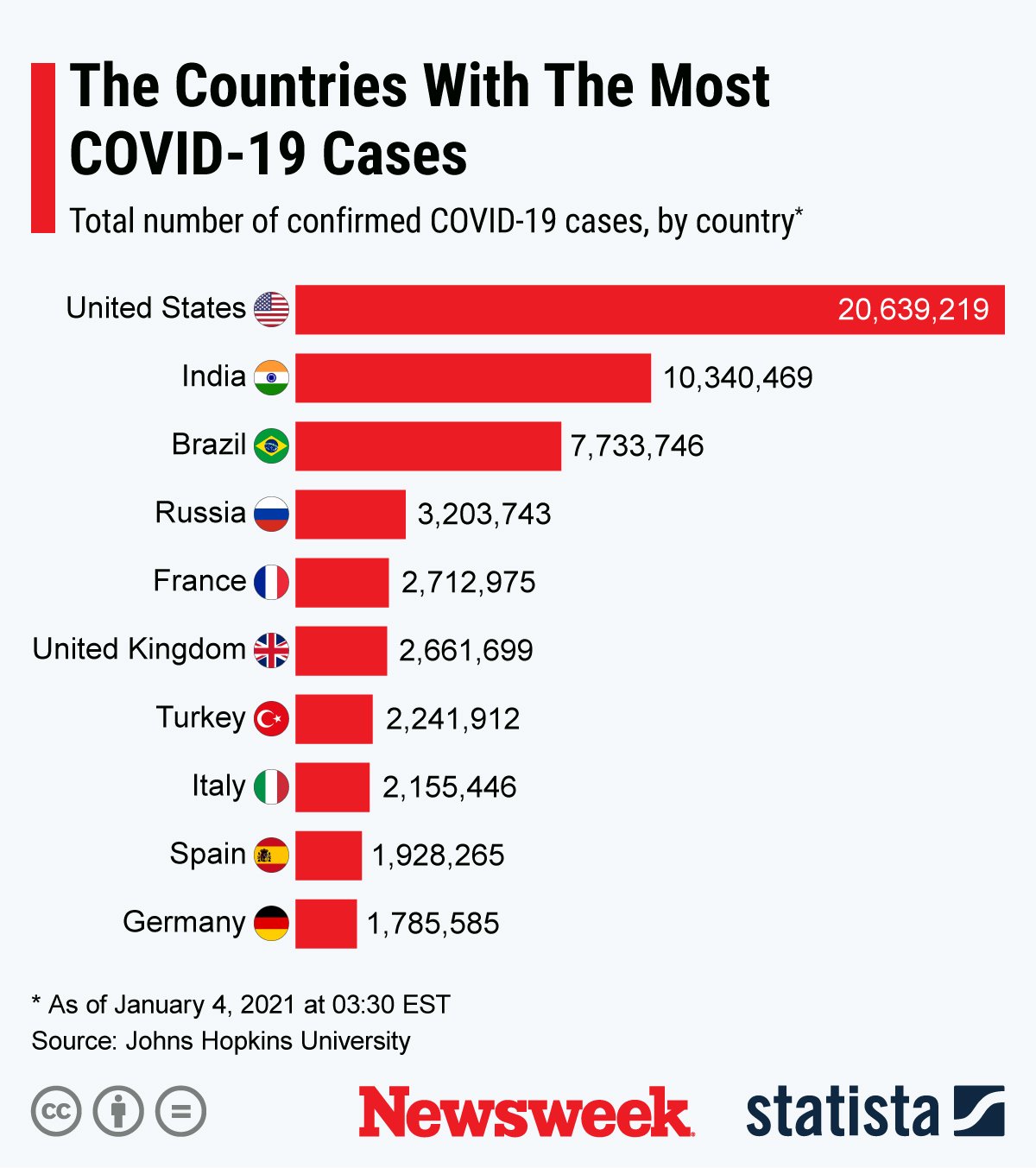The U.S. coronavirus death toll is forecast to hit around 502,601 on February 4, while the country's daily COVID-19 death count is projected to peak about a week later at around 5,489 on February 10, according to the latest projections from the Institute for Health Metrics and Evaluation (IHME) at the University of Washington.
The projected total death count and daily death toll would be reached if "vaccine distribution is scaled up over 90 days" and "governments do not re-impose mandates if cases increase," the IHME notes.
"Daily deaths is the best indicator of the progression of the pandemic, although there is generally a 17-21 day lag between infection and deaths," the IHME notes on its website.
Total confirmed deaths in the U.S. have surpassed 360,000, as of Monday, while the latest average death toll was reported to be 2,696 on Sunday, according to data compiled by Worldometer.
The 90-day period referenced in the IHME projection refers to "the time it takes to scale up to full capacity for [vaccine] distribution. So for example, in the reference scenario, the maximum number of doses per day is three million, and that scenario assumes 90 days to reach three million doses per day," a spokesperson for the IHME previously told Newsweek.
"The doses per day figures were based primarily on flu vaccine delivery in the U.S., with approximately 180 million annual seasonal flu vaccines delivered over three months each year," the spokesperson added.
According to the latest forecasts from 33 modeling groups received by the U.S. Centers for Disease Control and Prevention (CDC), "12,400 to 24,300 new deaths will likely be reported in the week ending January 23, 2021. The national ensemble predicts that a total of 383,000 to 424,000 COVID-19 deaths will be reported by this date.
"The state- and territory-level ensemble forecasts predict that over the next four weeks, the number of newly reported deaths per week will likely increase in three jurisdictions and decrease in seven jurisdictions," the CDC report noted on December 30.
The DELPHI epidemiological model from researchers at the Massachusetts Institute of Technology (MIT) predicts a lower death toll than that forecast by the IHME for early February, with 415,502 "total detected deaths" projected for February 4.
"We compare the historical performances of the DELPHI model with the top models used by the CDC over the last three months.
"Country-level projections are modeled based on all historical data to increase the accuracy of future predictions. As such, daily counts extracted from the model may not exactly correspond with reports," the model noted.
The average death toll in the U.S. has been rising sharply from early November and hit a record high just before Christmas, reaching 2,782 on December 22, according to data from Worldometer.
The projected number of hospital beds needed is expected to peak on January 15 at around 185,435, according to the IHME.
According to forecasts from 13 modeling groups published by the CDC on December 30, "8,600 to 21,000 new confirmed COVID-19 hospital admissions will be reported January 25, 2021."
On Sunday, President Donald Trump claimed the number of COVID-19 cases and deaths is "far exaggerated" in the U.S.
Trump tweeted Sunday: "The number of cases and deaths of the China Virus is far exaggerated in the United States because of @CDCgov's ridiculous method of determination compared to other countries, many of whom report, purposely, very inaccurately and low. 'When in doubt, call it COVID.' Fake News!"
The number of cases and deaths of the China Virus is far exaggerated in the United States because of @CDCgov’s ridiculous method of determination compared to other countries, many of whom report, purposely, very inaccurately and low. “When in doubt, call it Covid.” Fake News!
— Donald J. Trump (@realDonaldTrump) January 3, 2021
The president's claim was challenged by Dr. Anthony Fauci, America's top infectious diseases expert, who said: "The deaths are real deaths," on ABC News' This Week program on Sunday.
"I mean, all you need to do is to go out into the trenches, go to the hospitals, see what the health-care workers are dealing with.
"They are under very stressed situations. In many areas of the country, the hospital beds are stretched, people are running out of beds, running out of trained personnel who are exhausted right now. That's real. That's not fake," he added.
Speaking to Newsweek last week, the director of the National Institute of Allergy and Infectious Diseases said he believes "We can end this outbreak."
"We know what our path is ahead of us. We've got to get as many people as possible vaccinated. We are fortunate enough to have at least two, and likely more, highly efficacious vaccines.
"The real challenge is getting everybody vaccinated as quickly as you possibly can. Once we do that, we can end this outbreak. So we know what the end game is, we've just got to implement it," the immunologist told Newsweek.

The wider picture
The novel coronavirus has infected more than 85.2 million people, including just over 20.6 million in the U.S., since it was first reported in Wuhan, China.
More than 1.8 million people have died worldwide and more than 47.9 million have recovered as of Monday, according to Johns Hopkins University.
The graphic below, produced by Statista, shows the spread of COVID-19 in the U.S.

The graphic below, produced by Statista, shows countries with the most COVID-19 cases.

Uncommon Knowledge
Newsweek is committed to challenging conventional wisdom and finding connections in the search for common ground.
Newsweek is committed to challenging conventional wisdom and finding connections in the search for common ground.
About the writer
Soo Kim is a Newsweek reporter based in London, U.K. She covers various lifestyle stories, specializing in travel and health.
Soo ... Read more
To read how Newsweek uses AI as a newsroom tool, Click here.








